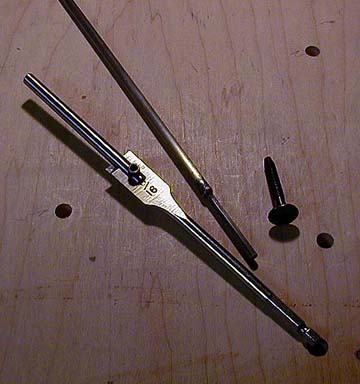I once seen a reverse Forster bit, I believe it was Frets.com, or maybe Charlie Hoffman's site? Anyway, I'm looking for a Forster bit that will allow me to (first) Drill pilot holes in a neck block, then reach in through the sound hole and insert the shaft of the reverse forster bit, and then attach it to my drill and then (PULL) the bit to create a counter sunk recess for the nuts to hide in on my bolt on necks. I would then attach the neck, and cover the holes with a tag. Does this make sense?

Is this a custom tool or can it be found out there?
THX
 (G'head, ask me how I know this!!!) Anyway Lance, if you need it I have a 5/8" reverse spot-facer I can lend you!
(G'head, ask me how I know this!!!) Anyway Lance, if you need it I have a 5/8" reverse spot-facer I can lend you!

